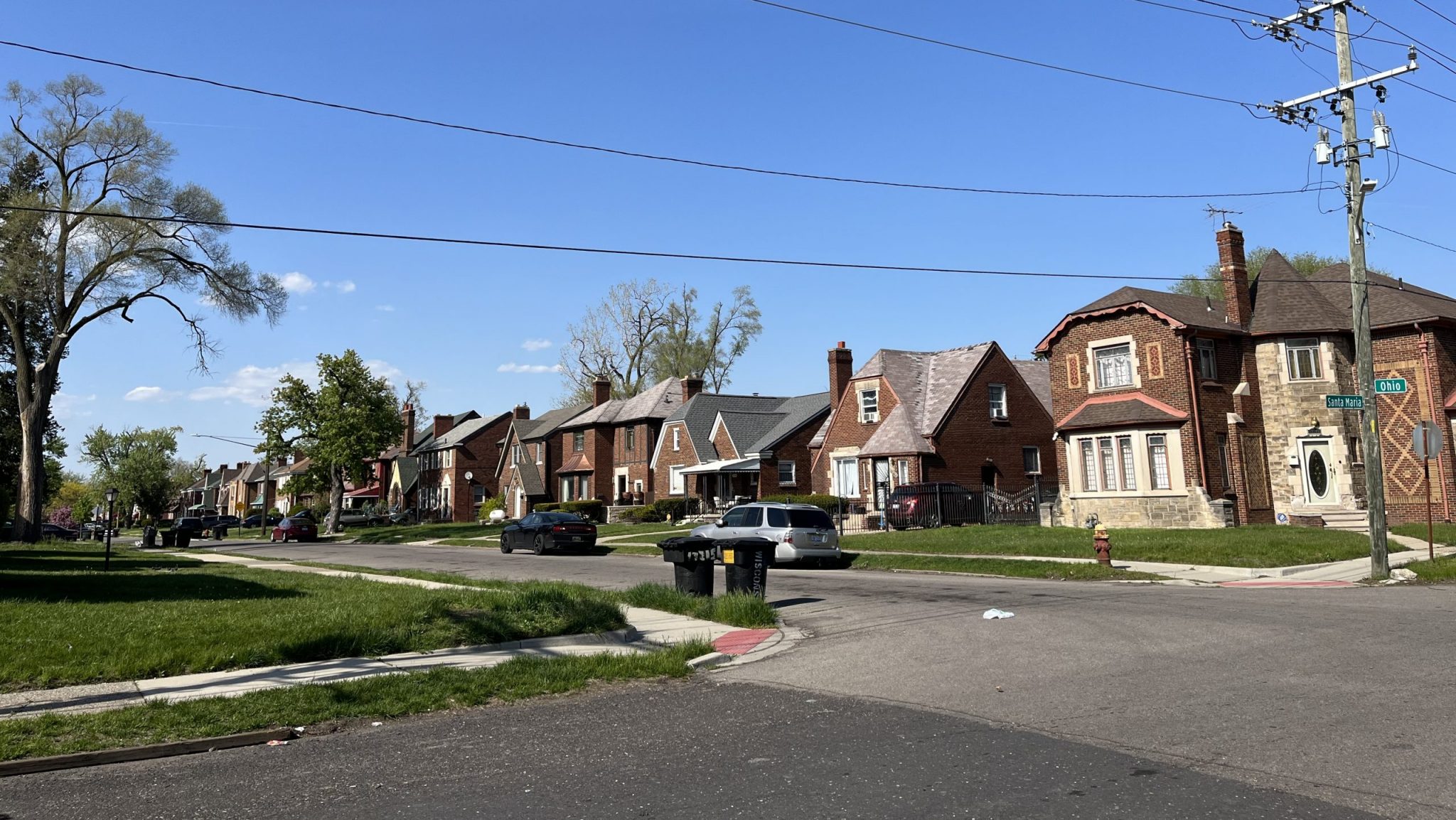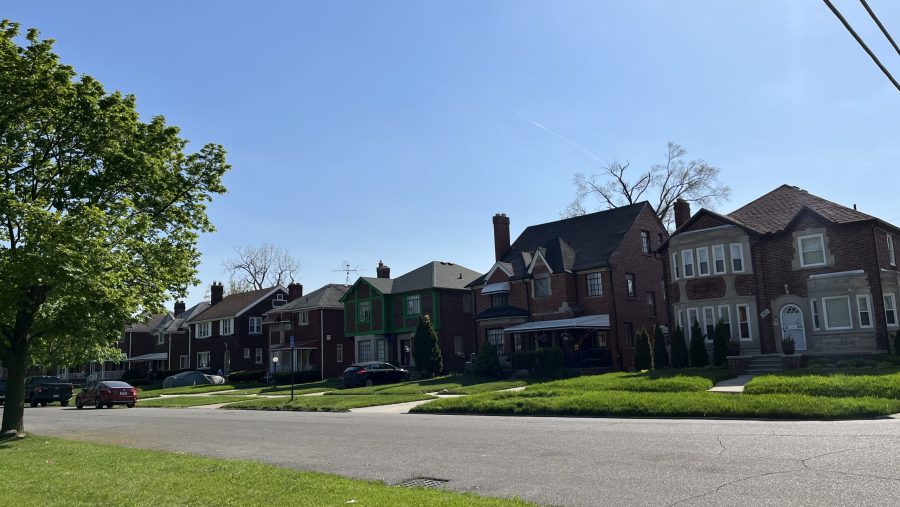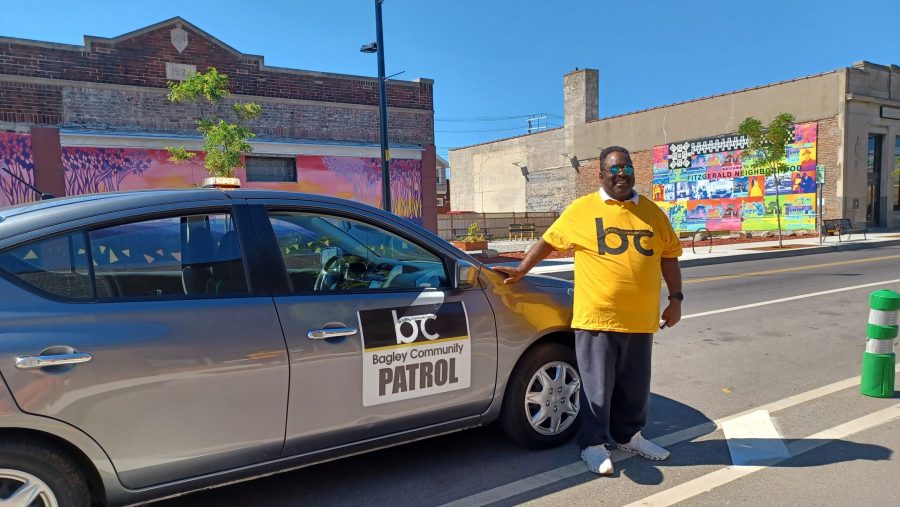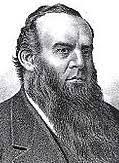CuriosiD: Who was Bagley?
In this episode, we learn who the Bagley neighborhood was named after and uncover his ties to the founding of the Republican Party.

Brick houses in Detroit's Bagley neighborhood.
WDET’s CuriosiD series answers your questions about everything Detroit. Subscribe to CuriosiD on Apple Podcasts, Spotify, NPR.org or wherever you get your podcasts.
In this episode of CuriosiD, listener Reginald Ayala asks about the Bagley neighborhood:
“Why is it called Bagley? Who is Bagley?”
The short answer
We can’t say why exactly the Bagley neighborhood is named as it is. It is likely that the area took the name from Bagley Elementary which opened in 1930, and that it became more formal when the Bagley Community Council was formed in 1961. We can say for certain who it was named after: John J. Bagley.
About the Bagley neighborhood
Bagley sits within the boundaries of Wyoming, McNichols, Outer Drive and Livernois – the Avenue of Fashion.
In the 1920s, homes built in the area were required to be brick or stone – and to prohibit Black and Jewish people from owning them.

But by the 1940s, those rules were not being strictly enforced. Jews began building homes in the neighborhood. The Adat Shalom Synagogue was built on Curtis Avenue in 1943. It’s now the Bailey Cathedral Church of God in Christ.
In the 1960s, The Bagley Community Council was formed in part to address the twin concerns of Black people moving into the neighborhood and white flight from neighborhoods across the city. According to reporting from the Detroit Free Press, the council decided to use home prices to “screen” potential homebuyers. But realtors got pretty aggressive about trying to sell homes and didn’t mind using white residents’ fears against them.
Chris Johnson is the current president of the Bagley Community Council. He says he heard the story of a realtor hiring a Black woman to walk the neighborhood with a stroller once in the morning and once in the evening to give the impression that Black families had moved in. White families moved out. And for decades, Bagley has been a majority Black neighborhood.

Now, white residents are moving into Bagley. Its inventory of homes with “good bones” and the vibrant and relatively dense business district along its borders are attractive to people looking to live in the city.
Residents can walk to restaurants ranging from Caribbean to Hibachi, to a few grocery stores, to art galleries, to fashion boutiques – even to a doctor’s office.
Council President Johnson says he’s excited to see the neighborhood become more diverse. He wants to make sure, though, that Black homebuyers don’t have a hard time accessing financial resources that allow them to buy in the neighborhood.

He also wants potential Bagley residents to know that the Bagley Community Council has grown. Within the last year, it launched neighborhood car patrols and expanded neighborhood-wide celebrations and social offerings.
Johnson says anyone looking for a beautiful home in a growing community should reach out.
John J. Bagley
John J. Bagley was born in Medina, New York in 1832. His family moved to Michigan when he was 8, first living in Constantine, then Owosso. At 15, he moved to Detroit and became an apprentice at a tobacco shop. Detroit was the largest producer of tobacco products at the time.

Bagley quickly moved up in the company and eventually bought it from the owner and expanded the operation into the John J Bagley company. He became one of the partners in the Mayflower Tobacco Company, employing more than 1,200 people and earning more than $4 million a year.
Then, he entered politics. Bagley was elected to Detroit’s Common Council – what the City Council was called at the time. He served on the Board of Police Commissioners and drafted the language forming the city’s professional police department. He was one of the founding members of the Republican Party in Michigan in 1854 (we’ll get back to this shortly). Bagley was elected as governor of Michigan and served two terms from 1873 to 1877.
Bagley didn’t live in the Bagley neighborhood and didn’t have any special connection to it.
He and his wife, Frances, lived in a huge home in Downtown Detroit on Park Street between Washington Boulevard and what was then called Macomb Street. Today, we know it as Bagley Street.
Battle for the Republican Party
The Republican Party was founded in 1854. But where it was founded is a bit contentious.
Martin Hershock, a history professor and dean at the University of Michigan Dearborn, has written about the history of the Republican Party. He says Rippon, Wisconsin considers itself the place where the party was founded. It held a founding convention in March of that year.
But, Herschock says, the Rippon Republicans did not run any candidates – which is what a party does, after all.
He says the group that met in July 1854 in Jackson, Michigan calling itself the Republican Party immediately ran candidates and won seats in office.
And so, he says, the Jackson Republicans should wear the crown of founders of the Republican Party.
We want to hear from you!
Have a general question about Detroit? Ask us here or fill out the form below.
More from CuriosiD:
- Where does the name ‘Hamtramck’ come from?
- Who was John R?
- We answered all your questions about the mile road system
Support the podcasts you love.
One-of-a-kind podcasts from WDET bring you engaging conversations, news you need to know and stories you love to hear.
Keep the conversations coming. Please make a gift today.
